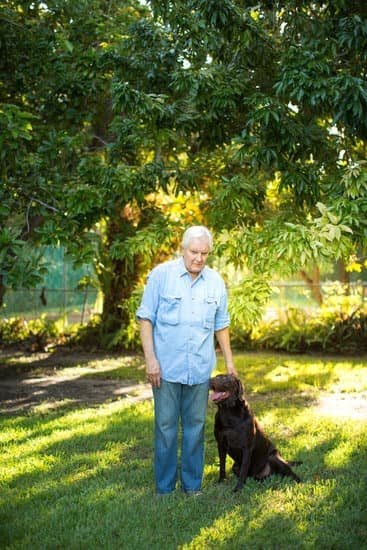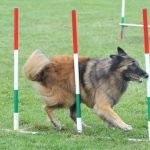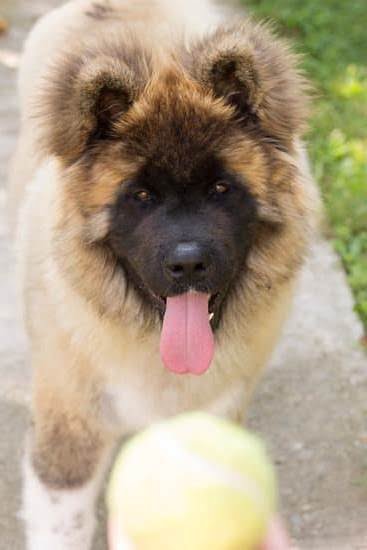How long are leader dogs trained? Leader dogs, also known as guide dogs, play a crucial role in assisting individuals who are visually impaired to navigate the world around them. The training process for these loyal and hardworking canines is intensive and exacting.
From puppyhood to adulthood, specialized training techniques, socialization, advanced training, and evaluation are all part of the process. In this article, we will explore the development stages of leader dogs, the training process from start to finish, and the impact of these remarkable animals.
Leader dogs serve as essential companions for individuals with visual impairments, providing them with independence and mobility. The journey of a leader dog begins with a carefully planned and comprehensive training program that equips them with the skills needed to navigate diverse environments and assist their handlers effectively.
This article will provide an in-depth overview of the different stages of training that leader dogs undergo, shedding light on their vital role in improving the quality of life for visually impaired individuals.
From puppyhood to adulthood, leader dogs go through various developmental stages that mold them into reliable and competent service animals. Specialized training techniques are implemented to teach obedience and specialized skills that are essential for performing their duties effectively.
Additionally, socialization plays a crucial role in preparing leader dogs for real-world situations they may encounter while aiding their handlers. We will delve into the details of how these aspects come together in preparing leader dogs to fulfill their roles with excellence.
The Training Process
- Puppy Training: Leader dog training typically begins when the puppies are around 8 weeks old. During this stage, they are introduced to basic commands such as sit, stay, and heel. They also start learning how to walk on a leash and become familiar with different environments and sounds.
- Basic Obedience: As the puppies grow into young adults, they continue their obedience training which includes mastering more advanced commands. They also learn how to navigate obstacles and respond to various cues from their trainers.
- Specialized Skills Training: Once the basic obedience is established, leader dogs receive specialized skills training based on the specific needs of their future handlers. This can include guiding individuals with visual impairments, retrieving items, or responding to medical alerts.
- Advanced Socialization: Alongside obedience and specialized skills training, leader dogs undergo extensive socialization to prepare them for real-world situations. They are exposed to different environments, people, and animals in order to develop confidence and adaptability.
The entire training process typically lasts for approximately 12-18 months, depending on the individual abilities of each dog. The intense dedication of the trainers as well as the genetic predisposition of the dogs play a significant role in determining how long are leader dogs trained before they are ready for service.
Puppyhood to Adulthood
Leader dogs, also known as guide dogs, play a crucial role in the lives of individuals with visual impairments, providing them with independence and mobility. But have you ever wondered how long are leader dogs trained before they are ready to assist their handlers? The training process for leader dogs is intensive and comprehensive, typically lasting around 18-24 months from start to finish.
During the first year of a leader dog’s life, they go through basic obedience training and socialization. This period is crucial for the development of good manners, proper behavior in various situations, and adapting to different environments.
They learn skills such as walking on a leash without pulling, obeying commands like sit and stay, and remaining calm in crowded or noisy settings. Additionally, leader dogs-in-training are exposed to different surfaces under their paws and introduced to various sounds and scents they may encounter in the real world.
As leader dogs enter their second year of training, they undergo more specialized instruction tailored to their future role as guide dogs. This phase involves honing their ability to navigate obstacles such as stairs or curbs, safely cross streets, recognize potential hazards, and execute commands with precision. Experts use positive reinforcement methods to ensure that leader dogs maintain focus and confidence during these tasks.
Below we are going to show some relevant information on a HTML table.
| Training Stage | Duration |
|---|---|
| Basic Obedience | 1 year |
| Specialized Guide Training | 6-12 months |
Specialized Training Techniques
Leader dogs undergo intensive and specialized training to prepare them for their important roles in assisting individuals with visual impairments. The training process typically begins when the leader dog is just a few months old and continues for an extended period to ensure they are fully equipped for their duties. So, how long are leader dogs trained? On average, leader dogs are trained for about 14-18 months before they are matched with their handlers.
The training process involves various stages, starting with basic obedience training such as walking on a leash, responding to commands, and mastering good manners in public settings. As the leader dog progresses, they receive specialized skills training tailored to the specific needs of their future handler. This may include learning to navigate complex urban environments, safely guiding their handler through traffic, and effectively communicating potential obstacles or hazards.
In addition to obedience and specialized skills training, leader dogs also undergo extensive socialization to ensure they are comfortable and confident in various real-world situations. This includes exposure to different environments, people, animals, and sensory stimuli to help them remain calm and focused while performing their duties. All of these specialized training techniques work together to produce a well-rounded leader dog that is capable of providing life-changing support to individuals with visual impairments.
| Training Stage | Duration |
|---|---|
| Basic Obedience Training | 4-6 months |
| Specialized Skills Training | 6-8 months |
| Socialization | 2-4 months |
The Importance of Socialization
Socialization is a critical aspect of training for leader dogs, as it prepares them to interact with and navigate real-world situations. The process involves exposing the leader dog to a wide variety of environments, people, and other animals in a positive and controlled manner. This helps the leader dog become comfortable and confident in different settings, ultimately enabling them to perform their duties effectively.
During socialization, leader dogs are gradually introduced to various stimuli such as different sounds, textures, smells, and sights. They also learn how to behave appropriately in public spaces and around people. By exposing leader dogs to these diverse experiences early on, they are better equipped to handle the unpredictable nature of their working environment. Additionally, socialization helps prevent fear or anxiety-based behaviors that might interfere with the leader dog’s ability to perform their duties.
Socialization continues throughout a leader dog’s training, with increasing complexity as they progress. This includes exposure to bustling urban areas, crowded public transportation, and other challenging scenarios they may encounter during their work. Through ongoing socialization efforts, leader dogs develop the confidence and adaptability needed to navigate any situation they may face while assisting their handlers.
Advanced Training
Task-Specific Training
After the foundational obedience and socialization training, leader dogs undergo advanced training to prepare them for specific tasks and environments. Depending on the needs of their future handlers, leader dogs may be trained in guiding individuals with vision impairments through busy urban environments, navigating rural areas, or even providing support for individuals with other types of disabilities. This specialized training ensures that leader dogs are equipped to handle a variety of challenges and situations in their role as service animals.
Environmental Exposure
During this advanced phase of training, leader dogs are exposed to a wide range of environmental stimuli to ensure they can remain calm and focused in any situation. This includes exposure to loud noises, crowded spaces, various forms of transportation, and other potential distractions. By familiarizing leader dogs with different environments during training, they are better prepared to guide their handlers confidently and safely through any setting they may encounter in their daily lives.
Task Refinement
Advanced training also involves refining the specific skills required for the dog’s designated tasks. For example, if a leader dog will be responsible for assisting an individual in navigating a public transit system, it will receive specialized instruction on how to locate boarding platforms, navigate crowds while leading its handler, and find designated seating areas.
By honing these task-specific skills through rigorous training and positive reinforcement techniques, leader dogs become adept at fulfilling their important roles in supporting individuals with visual impairments.
The Role of the Trainer
Building Trust and Connection
One of the most crucial aspects of training a leader dog is the bond that is formed between the trainer and the dog. This bond is built on trust, respect, and clear communication.
Trainers spend a significant amount of time getting to know their dogs, understanding their behavior, and identifying their strengths and weaknesses. By establishing a strong bond with the leader dog, trainers can effectively guide them through the training process and prepare them for their future role as service animals.
Positive Reinforcement Techniques
To build a strong bond with leader dogs, trainers often use positive reinforcement techniques to reward desired behaviors. When a dog successfully performs a task or demonstrates good behavior, they are rewarded with treats, praise, or playtime. This not only helps in reinforcing the desired behavior but also creates a positive association between the dog and the training process. Positive reinforcement techniques also contribute to building trust and strengthening the bond between the trainer and leader dog.
Customizing Training Approaches
Every leader dog is unique, with different personalities, temperaments, and learning styles. Trainers must be flexible in their approaches and tailor their training methods to suit each individual dog. Some dogs may respond well to certain training techniques while others may require a different approach. Understanding how long are leader dogs trained depends on these customized training methods that cater to each specific dog’s needs, ultimately leading to a stronger bond between trainer and leader dog.
The Final Test
After months or even years of training, the final test is a crucial step in determining whether a leader dog is ready to begin their service. This evaluation process ensures that the dog has developed the necessary skills and behaviors to effectively assist individuals with visual impairments in their daily lives. The test evaluates the leader dog’s obedience, problem-solving abilities, socialization skills, and task-specific training.
During the final test, leader dogs undergo a series of assessments to determine their suitability for service. These assessments may include obedience tasks such as following commands, walking on different surfaces, and ignoring distractions.
The dog’s ability to perform specific tasks such as guiding their handler through various environments and navigating obstacles is also evaluated. Additionally, the leader dog’s temperament and response to real-world situations are assessed to ensure that they can remain calm and focused in challenging scenarios.
To provide a clearer understanding of this process, here is an overview of the final test evaluation criteria:
- Obedience: Following basic commands and remaining focused
- Task Performance: Guiding handler through different environments and obstacles
- Socialization: Reacting positively to other people and animals
- Problem-Solving: Adapting to unexpected situations with confidence
Once a leader dog successfully completes the final test, they are deemed ready for service. This marks the beginning of their partnership with an individual who is blind or visually impaired. It is important to recognize that this evaluation process ensures that only the most capable and prepared leader dogs are matched with individuals who rely on their assistance in their daily lives.
Overall, the final test serves as a vital step in ensuring that leader dogs are able to fulfill their role effectively and make a positive impact on the lives of those who depend on them for guidance and support.
Conclusion
In conclusion, the impact of leader dogs on the lives of visually impaired individuals cannot be overstated. These highly trained and dedicated animals provide not only invaluable assistance but also emotional support and companionship. The lifelong training process that leader dogs undergo ensures that they are fully prepared to handle any situation and meet the specific needs of their human partners.
The training process for leader dogs is a lengthy one, typically spanning from puppyhood to adulthood. This extensive period allows for the development of crucial skills, from obedience and basic commands to more specialized tasks such as navigating complex environments and providing guidance in crowded or high-traffic areas. Throughout this journey, trainers work tirelessly to build strong bonds with the leader dogs, understanding their unique abilities and challenges to maximize their potential for service.
Ultimately, the impact of leader dogs goes far beyond their practical assistance. These remarkable animals bring independence, confidence, and joy into the lives of those they serve. As we consider the question “How long are leader dogs trained?” it becomes clear that this investment of time and resources is essential for creating highly skilled and reliable partners who enhance the quality of life for visually impaired individuals.
Frequently Asked Questions
How Long Until a Guide Dog Is Fully Trained?
The training period for a guide dog can vary, but it typically takes about 18-24 months for them to be fully trained. This includes learning obedience, navigation skills, and socialization to prepare them for their role as a guide for someone with visual impairments.
How Long Till a Dog Is Fully Trained?
The time it takes for a dog to be fully trained can depend on several factors such as breed, age, and individual temperament. Generally, basic obedience training can take 6-12 months, while specialized training for tasks like search and rescue or service work can take up to 2 years.
How Long Does It Take to Teach a Dog a Command?
Teaching a dog a command can take anywhere from a few minutes to several weeks, depending on the complexity of the command and the individual dog’s ability to learn and retain information. Consistent practice, patience, and positive reinforcement are key in teaching new commands effectively.

Welcome to the blog! I am a professional dog trainer and have been working with dogs for many years. In this blog, I will be discussing various topics related to dog training, including tips, tricks, and advice. I hope you find this information helpful and informative. Thanks for reading!





